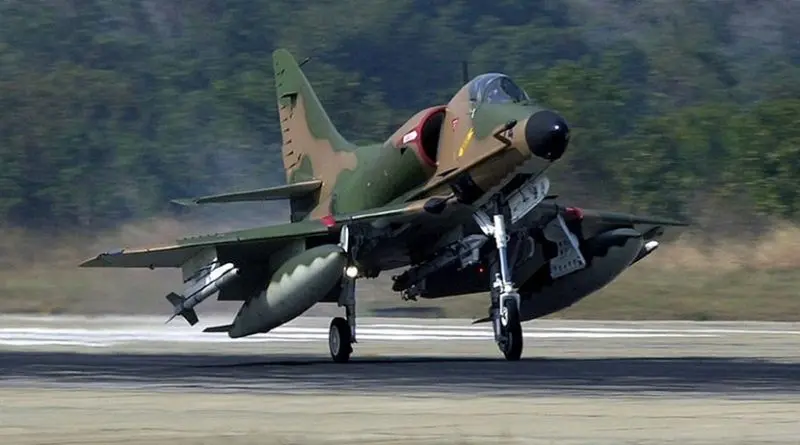Developing Singapore’s Next-Generation Military – Analysis
By Samuel Chan*
The Singapore Armed Forces (SAF) has begun its next-generation modernisation in a quest to be future-ready. Singapore’s defence establishment is focused on homeland, cyber and personal security. COVID-19 and deteriorating US–China relations further complicate Singapore’s national security concerns given its limited tools and options to address global strategic competition. COVID-19-induced delays and uncertainty about the state of regional security put into stark relief the importance of the SAF’s modernisation.
Singapore’s military modernisation over the 55 years since its independence has been characterised by consistency, caution and coherence. The defence establishment has consistently rolled out periodic doctrinal reviews, organisational restructuring, technological acquisition and mid-life asset upgrades. Caution is evident in the SAF’s current modernisation project, which is based on need and not hype, so that acquisitions represent value-for-money and do not spark an arms race. Coherence is about synergy through compatibility and interoperability.
The 1G SAF (1965 to the early 1980s) and 2G SAF (mid-1980s to the early 2000s) began with the key thrusts of force generation via conscription, mastering platforms and intra-service integration. National security concerns were communist subversion, and both real and perceived threats from larger neighbours. Periods of significant weapons procurement across the region traversed a fine line between modernisation and an arms race.
The SAF began the 21st century capable of conducting joint operations centred on a seven-division army, a layered air defence umbrella and a nascent blue-water navy. The 3G SAF (the early 2000s to present) differed from its previous manifestations in three distinct ways.
First, there were improvements in the SAF’s ability to shoot (precision and lethality), move (mobility, survivability, operational range and endurance) and communicate (within Singapore’s command, control, communications, computers, intelligence, surveillance and reconnaissance network). Second, the integration of peacetime and wartime roles through reorganised command structures better met the SAF’s warfighting and interagency requirements. Third, the SAF’s maturity and political necessity led to expeditionary operations further afield such as anti-piracy missions in the Gulf of Aden and niche roles in Afghanistan and Iraq.
The next-generation SAF (the early 2020s onward) is likely to focus on three areas in the short to medium term up to 2030. First, it will build on 3G initiatives including the sensor-shooter cycle, surveillance, pre-emptive maintenance and training on data analytics. It will also explore and exploit unmanned, automated, artificial intelligence (AI), cyber and space-based assets for multi-domain operations. The ubiquitous acquisition and upgrading of hardware will continue at a steady pace with slight COVID-19-related delays.
Such actions reflect general technological trends in first class militaries globally. For Singapore, technology partially alleviates the demographic crisis facing its military with the number of conscripts expected to fall by a third in the next decade.
Second, the next-generation SAF will improve over the 3G variant in terms of its capabilities to address homeland and cybersecurity threats. The former includes additional command and control and intelligence assets, and improved tactical options for specially designated formations like the Island Defence Task Force, the Special Operations Task Force and the Maritime Security Task Force to address terrorism. Singapore’s Military Intelligence Organisation and Defence Cyber Organisation are also slated for restructuring but details are still forthcoming.
Finally, the next-generation SAF will continue to train for kinetic operations and fulfil its mandate to deter, fight and win in any conflict if necessary. The difference in comparison with the 3G SAF is not only in the new platforms and capabilities that the SAF is building but also in larger and more realistic training areas. COVID-19 has forced a lower training tempo and cancelled large-scale exercises such as Exercise Forging Sabre in the United States and Exercise Wallaby in Australia.
Local training and augmented reality training may be a temporary solution this year but it is unlikely to replace field exercises anytime soon. This is most evident with the development of large training areas in Singapore and Australia capable of hosting brigade-level exercises by 2024 and 2028 respectively.
The next-generation SAF looks promising but the modernisation initiatives could lead to unintended consequences. There have already been unfounded assertions that Singapore’s purchase of Lockheed Martin F-35 Joint Strike Fighters was aimed at Beijing and that Singapore has been floated as a possible home port for the US Navy’s First Fleet. Such spurious claims conveniently ignore Singapore’s neutral stance between Beijing and Washington and its intention to keep clear of their current disputes.
More pressing concerns relate to the technology trap. Will Singapore’s neighbours view the SAF as a threat if the capability gap becomes too wide? Do AI, remote and automated systems spell the eventual end of national service? It is also unclear how the SAF’s operators will hone their instincts and develop as military professionals without deferring to technology.
Singapore’s defence planners have entertained such questions in their plans for the next-generation SAF. Modernisation, it seems, will be the easy part. The lure of technology is a constant for armed forces globally and maintaining peace and security remains a perennial challenge.
*About the author: Samuel Chan is Adjunct Senior Lecturer at the School of Humanities and Social Sciences, the University of New South Wales, Canberra. He is author of Aristocracy of Armed Talent: The Military Elite in Singapore (NUS Press, 2019).
Source: This article was published by East Asia Forum

